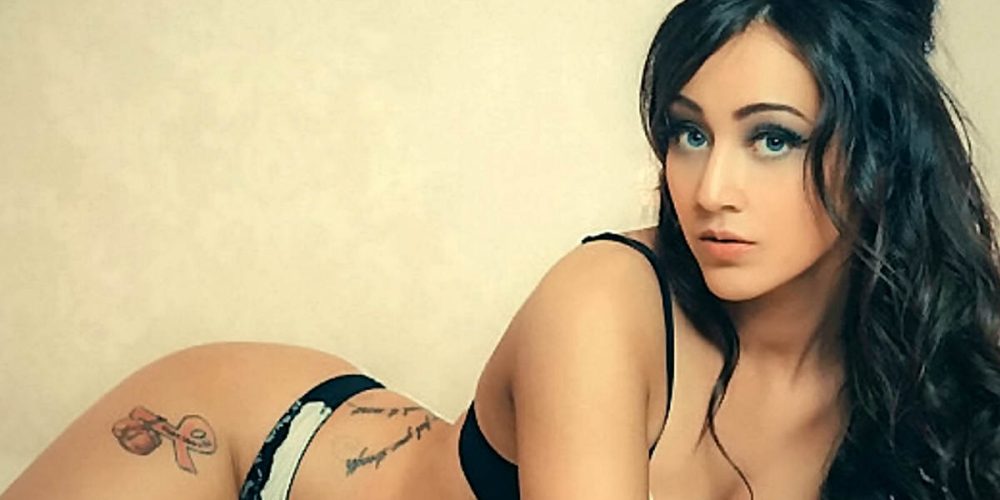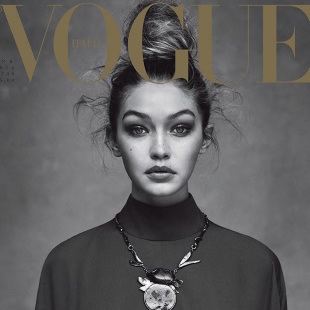Let me explain how this works in the real world:
In the beginning . . . there was The Model. But The Model was in darkness, so he said, “Let there be light!”.
Unfortunately, models aren’t Gods, so The Model remained in the dark.
On the Second Day there appeared a Serpent (otherwise known as a “mother agent”) who said, “Hey bud, for only the price of an apple, your first born son and 5% of everything you make for the rest of your life I’ll sell you this light bulb. Sign here.”
And The Model signed and accepted the light bulb from the Serpent. The Model held the light bulb and cried out, “Let there be light.” And yet still there was darkness. No manner of crying out into the wilderness or brandishing the light bulb would banish the night.
On the Third Day the Serpent whispered, “Yo, dude, all this hollering and carrying on isn’t going to get you into the light. You need to plug in the light bulb. Let me introduce you to The Hyena (the agent). He’s really plugged in.”
And so it came to pass on the Fourth Day that The Model met with The Hyena. “Here, let me show you how it works,” said The Hyena. For only 20% of everything you make for the rest of your life and your first born daughter (if she’s cute) I’ll plug you in. Sign here.” The Model signed, was plugged in, and saw the light.
But the light illuminated the Jungle, not the Garden that The Model was expecting. No gentle beasts (called Clients) were anywhere to be found. So The Model turned to The Hyena and said, “Verily, it is light, but the light is not illuminating. Show me the way.”
On the Fifth Day The Hyena said unto The Model, “Look in the Mirror. If a gentle Client sees you like that you will be sent to the wolves. We must remake your Image!” “Oh my”, cried out The Model, “is that painful?”
“It can be,” averred The Hyena. “We will send you to The Lion (a test photographer) who may, if he is well fed, turn you into a handsome prince. Or he may eat you for dinner. It all depends.” “Wow, that’s heavy,” said The Model. “Isn’t there some other way?” “Yes,” said The Hyena. We can take some Polaroids of you, but the problem is that they will . . . well . . . just look like you.
It came to pass that on the Sixth Day the Model finally took pictures of his new image to see the Gentle and Kindly Client, walking the pathway that The Hyena had showed him, full of the light from his lightbulb. He stood in line behind hundreds of other Models in front of the gingerbread house where the Gentle and Kindly Client lived and worked.
Finally the Gentle and Kindly Client met The Model, saw his new image, and said, “Thank you for coming, we will call you.”
And on the Seventh Day nobody called.
Welcome to modeling. Now you know the players and their place in the system. If the above sounds like it couldn’t possibly be true, you haven’t been at this long enough . . .
Still, some of you might object that the above description, while rich in characterization, lacks a little detail. For those of you picky enough to complain about such things, here is a more expansive look at the process and where various people fit into it.
If you want to be a model, you have several problems. You have to look like a model who will get hired (which isn’t the same as “Oh, you are so pretty, you ought to be a model!”). You have to have the things professional models need: pictures, portfolio, comp cards and knowledge. You have to find people who are hiring models like you and get to them at the right time, with the right preparation. Then you have to show up at the job and work with all the people around you. To do those things you need to be part of a team. Membership in the team changes as you go through the process, but it is almost never something you can do well on your own.
So let’s walk through the process and introduce people as they appear.
You want to be a model. More important, you want to be paid to be a model. That means somebody needs to tell you what to do to improve your chances. Do you need to lose weight? Gain weight? Cut your hair? Change the way you dress? What kinds of pictures do you need, and where do you get them?
The world is full of people who will offer you answers, but most of the time the answers aren’t good ones. You need someone who specializes in doing just that.
Enter the Mother Agent, stage left.
The job of the Mother Agent (who might be a man, or a corporation, and might be called a “Personal Manager” instead) is to prepare you for the market and introduce you to people who can get you work. A good Mother Agent will know how to evaluate your look against the various types used in modeling, and advise you on the styling changes you need to make to appeal to the market. She will have a stable of photographers who can shoot in the style you need and, if necessary, a printer who can make composite cards for you. So the Mother Agent sends you offstage to see the Test Photographer. Test Photographers have the job of making you look like what you need to in order to get work in that market. If the Mother Agent (or you) has chosen him well, you will get what you need. If she hasn’t, or if you don’t insist on what you need, you may end up simply with what the Test Photographer likes to shoot, and be worse off than you were before.
Finally, she will have contacts with “booking agents” (the Model Agency, who might also be a “model management company” which also does what Mother Agents do, but that’s a different story) who can actually put you in touch with people who might hire you.
You go running off stage, grab the Model Agent, and drag him back on. Enter Model Agent with you, stage right. He looks a little bewildered. “Why are you grabbing me after going to the Mother Agent?” he asks. “All you had to do was come to me in the first place and we wouldn’t have had to pay the Mother Agent a percentage until Hell froze over!” Which might be true, or it might not. Agents don’t really know, they just say these things because they like to sound important.
The Model Agent likes you. “You can work”, he says, and so it begins. In all probability he looks at your portfolio and says, “These all have to go. You need new pictures!”. Why? Because the Mother Agent isn’t preparing you for a particular market, she is preparing you to be accepted by someone who is in a market. The pictures she has done for you are intended to appeal to the Model Agent, but may be wrong for his particular group of clients. So you get to do that part all over.
Finally the Model Agent is done preparing you. You have the right look, the pictures, the composite card and portfolio and all the knowledge you need to get to work. All you need is the work. The curtain comes down on Act One.
Curtain up. Act Two. Somewhere on the other side of town is a corporate Vice President of Marketing whose annual bonus is in jeopardy. Sales figures for the year are down, market share is eroding, and he needs to do something to boost the bottom line. Time for an ad campaign. Time for you. He just doesn’t know it yet.
So he puts together a budget for the advertising. He just became a Client. (You should know that model agencies also refer to their models as “clients”, but that’s another story also.) The Client calls an Advertising Agency and asks them to design the ad campaign. The Ad Agency does just that, and prepares a concept and storyboards to show the Client. It all gets approved, and the Ad Agency is tasked to find people to actually produce the ad.
Enter the Assignment Photographer, stage left, and the Casting Director, stage right. (In the real world photographers often act as casting directors, and that makes for interesting problems as they get pulled from one side to the other. But again, that’s another story.) Assignment Photographers are much higher in the food chain than Test Photographers (although some Test Photographers sometimes get assignments, and they get whiplash from bouncing up and down the food chain). Assignment Photographers may get a vote on whether you get hired (they may even make the decision). Most important, they want to have an ongoing business relationship with the Client, so they will be careful to deliver whatever the Client wants.
The Photographer puts together his team of support staff. He needs a Makeup Artist and Hair Stylist to make the models look as the storyboards describe them. (Pay attention there: it is not the Photographer or Makeup Artist’s job to make you look “your best”. It is their job to make you look like what the Client wants, which may be something else entirely.) He needs a Stylist to pull together the clothes, accessories and props that will add to the effect wanted for the image. There may be others on the team as well: assistants of various types. But all of these people, the Photographer, the Stylist and, to a lesser degree, the Makeup Artist and Hair Stylist, may end up getting a vote on who gets hired to be the model.
Meanwhile, the Casting Director is assembling a group of candidates to be the models in the storyboard. She calls Model Agents, tells them what she needs, and the Agents send emails, composite cards, portfolios or models over to see the Casting Director. The Casting Director may do an initial screening, or may simply present all the candidates to the Ad Agency, photographer or Client for review.
Enter all the models in the city, from everywhere they could possibly enter. The stage gets very crowded.
At this point decisions get made. Each job is different, and it could be anyone involved who makes the decision about who gets hired. Steps in the process can get omitted (or, worse, repeated). It can be a very simple selection process, or very complicated, with lots of people getting a vote and nobody getting to say “yes”.
In the simplest cases the Client calls the Model Agent directly, tells them what they need, the agent selects someone who is right for the job, and the deal is done. In the most complex, the Casting Director calls every Model Agency in town, they end up with hundreds of applicants, and everybody in the chain feels they get to make a decision.
It’s those kinds of cases that result in the “everybody get onto the stage and let’s sort this out” kind of scenario we have just been describing. When that happens models will be looked at, photographed, discussed and sent home. They may be asked back for another look. Someone may decide to hire them and put them on hold, while someone else in the food chain decides they aren’t right for it, and substitutes another model. It can be a frustrating process when there are so many people in on the decision.
From the model’s standpoint, every one of those people in the food chain is part of their team. Most of them (Mother Agents, Model Agents, Clients, Photographers, Ad Agencies, Casting Directors) have the power to keep them from getting the job. Makeup Artists and Stylists may get a vote too. The model needs to understand who these people are, how they affect her career, and learn how to make each of them part of her team.
If you haven’t gathered it already, modeling is a team sport.






